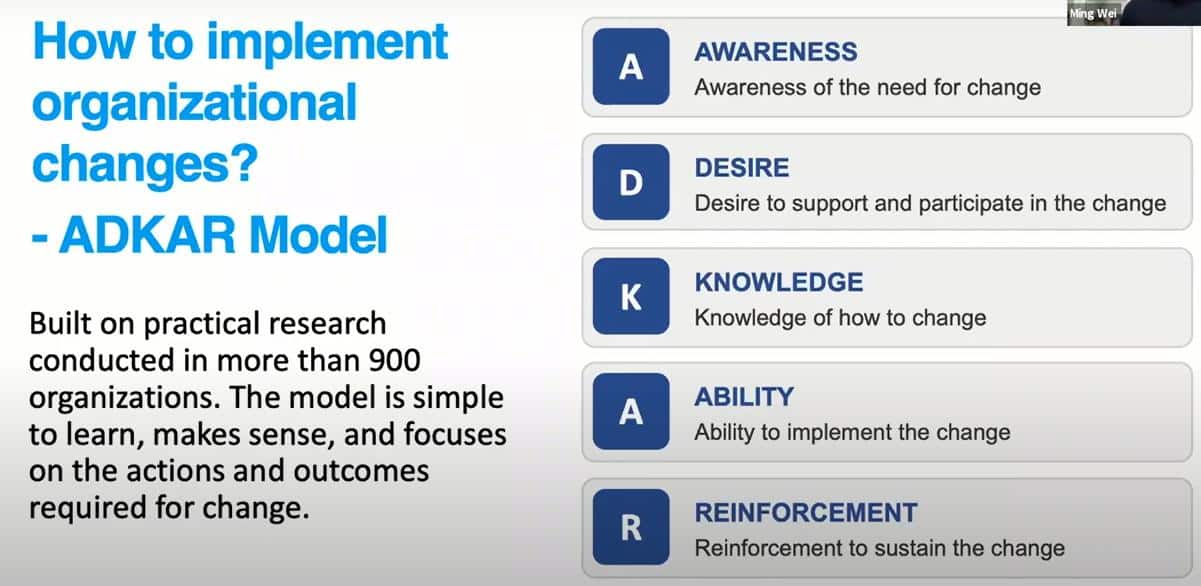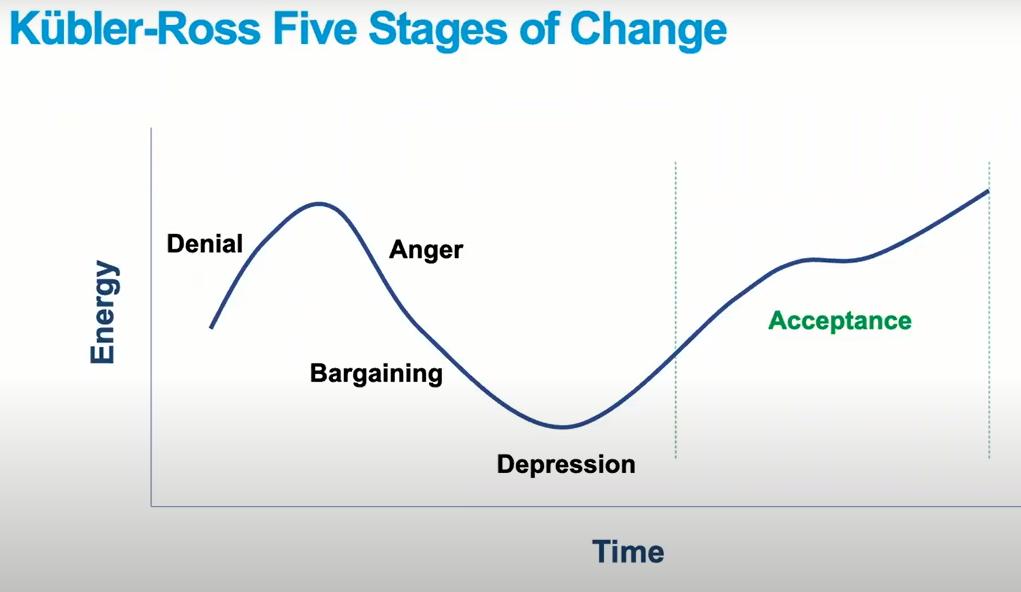Agile Change Management
If a business wants to succeed, it can’t afford to stand still. New challenges need to be met, and improvements can always be made. Recent turbulent times caused by local and global challenges such as the Covid pandemic, economic recession and Brexit, for example, have been catalysts for change. The ways in which organisations implement change can have a massive impact on their team members, culture and business processes.
Why implement organizational change?
Organizational change comes down to three things – crisis, opportunity or threat.
Crisis – Covid was a good example of this. It forced many organisations to do things differently, try new approaches and pivot their business. External factors can force organizational change in order for that business to adapt and survive.
Opportunity – new products/ services, diversification or digital transformation can open up additional or alternative revenue streams for a business for example.
Threat – competitors could be encroaching on your market; there could be supply chain issues; legislative changes could impact your business model – there are myriad potential threats to your business that can be addressed by organizational change.
Organizations implement initiatives to boost performance, grab opportunities or address concerns. Often, change is a result of this – process changes, new or different job roles, structural or digital transformation.
Effective change management will prepare, equip and guide your team members to accept and embrace organizational change.
What is the difference between agile change management and change management?
Whilst initially developed for software development teams, agile methodology applies well across an organisation. In particular, organisations undertaking change management activities.
Agile change management is a logical progression from Agile development processes. It facilitates an agile team’s need to adapt and address potential or upcoming change. Agile projects and teams evolve, question and improve continuously. These agile project management techniques work well for change management. Put simply, it’s a marriage of change management techniques with Agile processes like sprints, daily stand-ups and iterative approaches to delivery and a product lifecycle.
Traditional change management processes can seem cumbersome and slow in today’s fast-past and evolving times. That’s where more flexible, adaptive and newer change initiatives hold appeal. Step forward with agile change management processes.
What are the benefits of Agile change management?
Agile approaches are particularly suited to times of change. Being open to real-time adaptability and continuous improvement. Being aware of the end user or customer’s changing requirements and feedback. Being collaborative with your project team members. All of these provide the agility and flexibility that are beneficial for effective change implementation.
Agile change management approaches
It’s said that change is a constant. Businesses need to evolve to stay relevant and successful. But organisational change is often not the most difficult aspect. The people side of change can be the hardest to implement and to ensure employee engagement and buy-in to the new approaches and the future state of the organisation. Cultural change needs thought and diligent planning.
The change models are used to help to develop a tailored approach in order to engage your organization system in a change. Here are 2 popular change management approaches.
ADKAR Model outlines the 5 outcomes an individual or team needs to achieve for changes to be successful. This model was initially devised by Prosci.
Awareness – establish an awareness of the need for change. Ensure your team members are on board with the change roadmap and reasons why it’s needed and the expected positive impact.
Desire – ensure you have employee engagement with the changes and a desire to make the change project effective
Knowledge – provide training and information to empower teams with the required knowledge to facilitate change
Reinforcement – determine ways to reinforce the change, such as change practitioners or champions to keep reiterating the benefits and pushing the change forward.
Kubler-Ross is used to understand the journeys that humans go through as they experience some change. These are the phases identified:
- Denial – if I avoid it, it won’t happen to me. This is the human nature response to it.
- Anger – this high energy phase may include blaming people or factors, and non-acceptance of the situation.
- Bargaining – people may try to negotiate and make pleas to see if they can alter the situation.
- Depression – unable to change what’s happening, people can feel dejected and sad.
- Acceptance – this enables the person to move forward.
Agile Manifesto & Values
When we talk about Agile Values, what are we talking about?
- individuals and interactions over processes and tools
- working software over a comprehensive documentation
- customer collaboration over contract negotiation
- responding to change over following a plan.
Essentially, this emphasises the need to value human beings. This is especially important at times of change. Human beings in this case include team members, stakeholders and customers. Encouraging collaboration amongst teams. Aligning stakeholders with the workflow priorities for the sprint and plans to address the backlog. Plus, considering user stories and feedback.
Agile Methods and Cross-Functional Teams
Within the Agile Mindset, we have 4 pillars. Self-awareness, Global listening, Non-violent communication, and Servant leadership.
Self-awareness is about understanding ourselves, understanding how we behave, understanding the way we react to certain things, and understanding our strengths, weaknesses, our values, principles and all these kind of things.
Listening is probably the most important tool, for any team member, product owner, managers, leaders. That is listening intently, not just hearing with a distracted mind. This is essential in Agile self-organizing teams.
Nonviolent communication is about stating facts without apportioning blame or guilt or using aggression.
Servant leadership is about being there, supporting people, uplifting them, and helping them to be at their best in an Agile environment. Agile coaching, mentoring, and teaching are fundamental aspects of this.
Find out more about our Agile training courses
Subscribe to our YouTube channel and view our agile courses including ones on agile processes, scrum master training, Kanban training waterfall vs agile methodology and more, suitable for all levels of stakeholders from execs to development teams. Contact us for more info.



